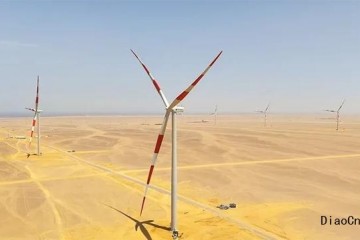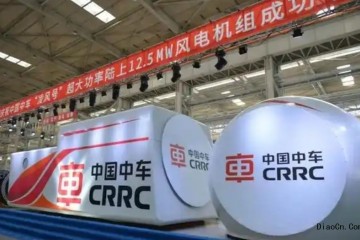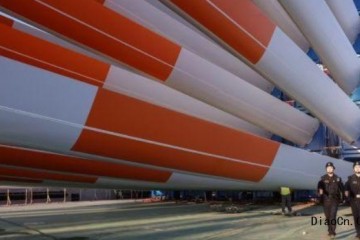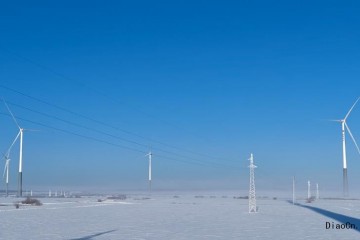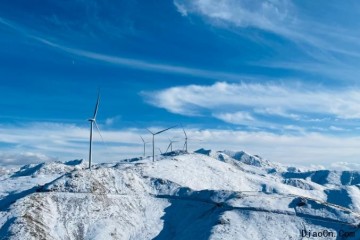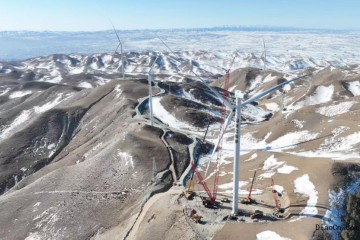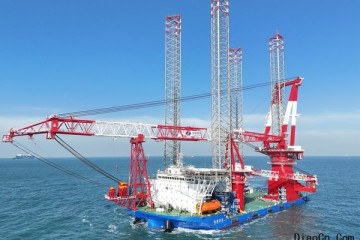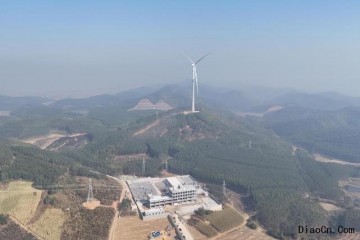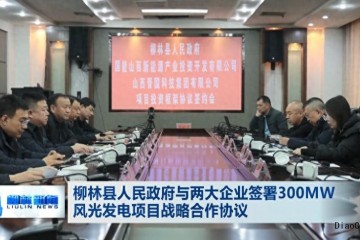建筑工地全职安全人员必读文章
编译:安全生产管理
修订:安全生产管理
审核:安全生产管理
目录
第一章专职安全员岗位职责1
第二章安全管理基本原则2
第三章工人的权利和责任 3
3.1 劳动安全纪律3
3.2 劳动安全权益3
3.3 劳动安全责任3
第4章今天我值班4
第五章施工现场安全生产管理要点4
5.1 普通作业 4
5.2路基工程13
5.3 路面工程15
5.4 桥涵工程16
5.5 隧道工程 27
5.6 重构31
5.7 流量工程 31
5.8 水运工程32
5.9 特种设备管理 37
第六章“十项”工地作业禁止39
6.1 高空作业“十不准”39
6.2电工“十不准”39
6.3 电(气)焊操作“十不准”39
6.4 脚手架“十不准”40
6.5 起重工作“十不准”40
6.6“十个不允许”40
6.7 加固工作“十不准”41
6.8 混凝土工程“十项不允许” 41
6.9 运输作业“十项不允许”41
6.10“十不准”进入工地41
6.11《焊接工作十不焊》42
6.12 起重作业“十不起重”42
第七章事故报告条例 43
7.1 事故类别 43
7.2 事件报告程序 43
7.3 事件报告时限 43
7.4 事件报告内容 43
7.5 事故赔偿报告 44
7.6 事故证据44
7.7 事件报告的方法和方法 44
第 8 章事故避免和急救 44
8.1 事故避免 44
8.2 现场急救44
8.3人工呼吸45
8.4 胸外按压 45
第九章相关法律法规45
9.1 中华人民共和国安全生产法(节选)45
9.2建设工程安全生产管理规定(节选)46
9.3公路水运工程安全生产监督管理办法(节选)47
9.4公路水运工程建设企业安全生产管理人员考核管理办法(节选)48
第 10 章常见材料密度 50
第一章专职保安人员职责
1、积极宣传安全生产方针政策,认真落实各项安全管理制度。
2、认真落实安全生产责任制,督促一线工人严格按照安全操作规程操作。
3、参加安全技术绩效交底会,检查课前会并做好记录,建立健全安全教育培训档案。
4、落实安全生产经费计划,检查使用情况。
5、监督检查机械设备的登记、使用、维护、修理,协助办理特种设备使用验收手续。
6、检查施工现场安全防护和安全设施。
7、检查安全技术措施落实情况,对风险较大的项目进行重点检查。
8、负责现场危害识别和预警。
9、排查安全隐患,督促整改;发现严重隐患的,立即责令停工,及时报告。
10、认真做好安全生产日常检查,做好安全日志,做好安全台账,负责数据归档。
第二章安全管理基本原则
1、人身安全第一原则。以人为本是科学发展的核心,“国家尊重和保障人权”已写入我国宪法。我们所做的每一项工作都是为人民服务,人民的利益高于一切。
2、防控原则。从工程技术、教育培训、安全管理等方面入手,采取相应对策,对隐患源进行排查整改,使事故不发生或将事故造成的损失降到最低。
3、“四大原则”。在查处安全生产事故时,必须坚持对事故原因分析不清,对事故责任人和公众进行教育,没有采取切实可行的预防措施。通过。
第三章工人的权利和责任
3.1 劳动安全纪律
1、认真遵守安全生产制度,上岗或转岗前必须参加安全培训。
2、正确佩戴和使用劳保用品。
3、特殊工种必须持证。
4、认真参加课前会议教育,作业时听从现场工作人员的指示。
5、生病不工作,累不工作,醉酒不工作。
6、非专业人员严禁擅自接电、违规用火,不熟悉工作区域不得进入。
7、严禁高空抛物线,应安全放置电机、机具和工具。
8、遵守当地和个人卫生制度,不吃过期、发霉、有毒的食物。
3.2 劳动安全权利
1、有权签订劳动合同并获得意外保险。
2、有权休息和离开,接受职业技能和岗前安全生产教育培训。
3、有权获得标准劳动保护用品。
4、有权了解施工现场和岗位的风险因素及防范措施。
5、有权拒绝非法指挥和强制冒险操作。
6、有权对安全生产和安全生产提出批评、举报和起诉建议。
7、在发生危及人身安全的紧急情况时,在采取必要措施后,有权停止作业或撤离危险区域。
8、享有工伤及时就医和工伤保险待遇的权利。
3.3 劳动安全责任
1、有责任履行劳动合同,遵守劳动纪律。
2、负责接受岗前安全生产教育培训,掌握安全操作技能。

3、负责穿戴和使用防护用品,保护现场安全设施。
4、有责任不伤害自己,不伤害他人,不被他人伤害。
5、有责任服从正确管理,遵守安全规定,不违规操作。
6、有责任听从他人的合理建议,及时纠正错误,接受管理层和相关部门的批评和建议。
7、在施工过程中遇到危及人身安全的突发事件,有责任避险,及时报告。
8、事故发生后有责任吸取教训,改正不良习惯。
第 4 章今天我在上班
1、提前15分钟准备,参加15分钟轮班前会议,危险工序待命,15分钟后再检查。
2、一查劳动防护用品有无磨损,二查班前会议是否召开,三查现场是否有危险,四查隐患是否整改。
3、安全很重要,工作日志一定要做好,技术交底一定要落实,计划的预警必不可少。
第五章施工现场安全生产管理要点
5.1 个普通作业
一、施工测量
1、主要危害:高处坠落、物体撞击、车辆损坏、溺水、触电。
2、管理要点:a.测量人员在高压线附近工作时,必须保持足够的安全距离。在陡坡和危险区域进行测量时,系好安全带并穿上防滑鞋。水测人员应穿救生衣。湾。在桥墩上测量时,应有上下桥墩的安全措施和防止人员跌落。 C。水上施工的测量平台应稳定可靠,运行时应派运输船看守。 d。使用磁力计、浅层剖面仪、声纳等水下测量设备时,应按规定在不合理明显的地方设置灯光或造型。收起尾灯线时,停止并关闭电源。
二、临时用电
1、主要危险源:触电
2、管理要点:a.项目开工前,必须编制施工临时用电计划。电力运营商必须为施工准备临时用电计划。电气工人必须经过认证才能工作。湾。对用电设备进行检修,应停电,并悬挂“禁止关门,有人在工作”的停电标志。 C。采用TN-S系统,满足“三级配电、两级保护”的要求,满足“一机一闸、一漏一箱”的要求。 d。配电室不小于3m履带吊班前安全检查,配电柜上部与屋顶的距离不小于0.5m,配电室内应安装灭火设备。 F。当主输电线路采用“三相五线制”时履带吊班前安全检查,必须使用五芯电缆。电缆线应敷设在地面或架空。严禁铺设在地面上,避免机械损伤和介质腐蚀。埋地电缆路径应标有方向标志。 G。配电箱可分为几个分支。电源和照明开关盒必须分开设置,严禁一盒多用;配电箱电源进线端与开关箱的有源连接严禁使用插头插座。 H。不得在外部电力架空线的正下方建设、架设工棚、搭建生活设施或堆放构件、架子、材料等杂物。
在带电设备附近架设或拆除脚手架时,建议关闭工作电源。在外接电力架空线附近作业时,支架外缘与外接电力架空线边线的最小安全距离应符合下表要求。
3、接地和防雷
①PE线必须连续设置。保护中性线在配电室必须反复接地,在配电系统的中端和末端也必须反复接地。每处接地电阻值应小于10W。
2 机器上的电气设备为防雷接地,连接的PE线必须同时重复接地。同一机电设备的重复接地和机械的防雷接地可以共用一个接地体,但接地电阻应满足接地电阻值的重复要求。
③电源和照明电路要分开,在特别潮湿的工作环境、导电良好的地线、锅炉或金属容器中工作的临时照明,电源电压应小于36V。
三、模板
1、主要危险源:模板倒塌、物体撞击、从高处坠落。
2、管理积分:
①模板堆放处应做基础处理。模板堆放高度不超过2m,弧形模板不宜多层堆放。
②模板场地应远离高压线。
③模板的安装应符合以下规定:
模板框架选用的钢管严禁变形、断裂、脱焊、松动螺栓或其他影响性能的材料;地面上的模板地面必须平整、压实,模板柱支撑应有垫板;模板施工高度为2m及以上时,必须设置安全防护设施;模板柱顶支撑必须设置牢固的拉杆,不得与不可靠的或临时的物体连接;组装柱模板时,其周围必须有牢固的支撑。柱模板架设完成后,应固定索风绳。支撑独立梁模板时,应设置临时作业平台。
④拆模板的顺序和方法:先支后拆,先支后拆;先拆非承重模板,再拆承重模板和支架;拆除模板时吊车出租,必须在工作区周围设置警示区。应有专人值守,严禁人员进入;严禁起重机直接吊起未撬松的模板;严禁从高处运下的物料往下抛。 3m以上的模板应使用起重设备缓慢拆除;模板在基坑或围堰内施工时,应检查是否有塌陷现象,确认无误后再进行操作。
四、支架和脚手架
1、主要危险源:支架倒塌、高处坠落、物体撞击、机械损伤、触电。
2、管理积分:
①脚手架必须经过专门设计、验收、批准,并严格按照程序实施。所使用的钢管、扣件、脚手板等构件必须符合国家标准和行业标准方可使用。
②支架和脚手架必须按照批准的安全施工方案进行处理,并且基础的承载力必须通过测试。
③作为承重工程的支撑脚手架,脚手架应进行预压,符合要求才能投入使用。
④非预应力结构的承重支撑只有在混凝土达到规定的强度要求时才能卸荷;预应力结构的承重支座必须在抗拉强度和灌浆强度满足要求后才能卸荷。
⑤脚手架周围必须设置防撞围墙;脚手架过马路时,必须按规定设置车(客)道,并准备防撞墩,并设置发光反光警示标志,车流量大。时机成熟,安排专人道路交通管制。
⑥脚手架操作人员必须按规定佩戴安全帽和安全带。
⑦立杆基础必须平整、密实,并满足架体承载能力要求;灯杆下应按要求垫特殊钢板底座,或垫不小于5cm,宽度不小于20cm,长度不小于2根间距的木板。
⑧应检查脚手架的稳定性,遇到雨雪等恶劣天气及剑阁附近的支架时吊车公司,应加强观察。
⑨脚手架应按要求设置剪刀撑和横向斜撑。每个剪刀撑跨越4~6根竖杆,长度不小于6m。斜杆与地面的倾角在45°~60°之间。
⑩当脚手架搭设高于施工结构顶部时,内排立杆应低于边缘4~5cm,外排立杆应不小于1.@ >边缘以上2m。护栏,挂上密密麻麻的网状安全网。
11 当脚手架架设高于施工结构顶部时,应经常检查铺设的安全设施,以确保操作人员和小型设备的安全通行。
12 架设弯架时,不得与桥梁或脚手架连接,以免弯架不稳定。
13 拆除脚手架时,应设置护栏或警示标志,并应自上而下拆除,不得进行双层作业。严禁随意投掷脚手架杆、板。
五、钢筋加工
1、主要危害:机械伤害、物体撞击、触电
2、管理积分:
①钢筋施工现场应满足作业需要,机械设备安装应牢固稳定。作业前应对机械设备进行检查和记录。
2 钢筋切断机操作过程中,严禁用手直接清除刀具附近的断头和杂物。非操作人员不得在钢筋摆动周围和刀具附近逗留。
③钢筋弯曲机在运行过程中,严禁更换芯轴和销钉、改变角度或调整操作,不得加油、清洗。
④严禁在弯曲钢筋的工作半径内和没有固定销的机身侧面站立。
⑤钢筋调直和冷拔作业时,应设置防护挡板,非工人不得进入现场。
六、焊接
1、主要危害:烧伤、火灾、触电
2、管理积分:
①电焊机应配备单独的开关盒。进行电焊作业时,操作人员应穿戴防护用品。焊接后,应锁好闸门。雨雪天应停止露天作业。
2 在潮湿的地方工作时,电焊机应放在木板上,操作人员应站在绝缘橡胶板或木板上。请勿使用钢丝绳、各种管道、金属部件等作为接地线。
③严禁在压力容器和管道上进行焊接。焊接带电设备时,必须先切断电源。
④存放易燃、易爆或有毒物质的容器或管道,焊接前必须清洗干净,并打开所有开口,保持空气流通。
⑤氧气瓶和乙炔瓶发生器的加热温度不得超过35℃,它们之间的距离应大于5m,与明火的距离不应小于10m,并应避免产生火花和尖锐物体防止与软管碰撞。
⑥乙炔管使用后,应将管内的水除去。软管回火的安全装置应用热水解冻,不得用明火烧烤。
⑦乙炔气瓶内的气体严禁用尽,残压不得低于下表规定。
残压与环境温度的关系
环境温度(℃)
0~15
15~25
25~40
残余压力(MPa)
0.05
0.1
0.2
0.3
⑧交流焊机应配备二次空载压降保护器。
七、混凝土生产运输
1、主要危害:物体撞击、车辆受伤、触电。
2、管理点
①搅拌站的电气设备和线路应绝缘良好,搅拌机机械设备的转动部位必须有保护装置。高大的搅拌站应安装防雷装置,风区应安装电缆风绳。
②发电机组应安装在机房内,并设有接地保护,接地电阻不大于4W。施工用发电机电源应与外部电源线联锁,严禁并联运行。
③搅拌筒仓检修时,应停机检修。维修或进仓清理叶片时,先切断电源,并设置专人看守电源或锁好开关盒,并贴上“仓库有人操作,不要关闭开关”。
④对带有急停装置的混合设备,当设备和人员有危险时,应立即启动急停装置。
⑤混凝土泵送时远离高压线。任何人不得靠近泵车臂架下的危险区域。
⑥强风5级以上时,泵车不得使用布作业。
⑦混凝土泵车应在工作棚内,安装应稳固牢固。拆卸管接头前,应清除管内残余压力,防止因管内压力造成事故。
⑧轨道平车运输:
1、大型预制构件的运输需专人指导。
2、铺设钢轨时,轨道曲线半径不小于25mm,纵坡不大于2%。
3、部件运输时,下坡滑索控制速度,并采取安全措施防止运输。

⑨平台拖车运输:
1、大型预制平板拖车的运输速度应控制在5km/h以内。对于简支梁的运输,除加斜撑防止倾覆外,平板上的搁置点还必须设置转盘。横梁的重心应与运输工具的中心重合。
2、在运输超高、超宽、超长部件时,应在拖拉机上悬挂安全标志。超高部位应由专人看管。
3、雨雪雾过陡坡时,必须提前采取有效措施。
七、举重
1、主要危险源:物体撞击、重物伤害、高处坠落、电击。
2、管理积分:
①在起重吊装作业现场,应悬挂操作规程、高空作业注意事项、“十勿吊”等警示标志。
对各种制动装置、限位装置、限位器、焊接件、钢丝绳及各种悬挂件作业前后进行全面检查
②吊装作业前,应有专人统一指挥、统一信号;
③遇6级以上大风,应禁止吊装作业。
④夜间起重作业必须提供充足的照明。
⑤钢丝绳应定期检查,吊装前应检查钢丝绳的断丝。严禁使用断丝明显的钢丝绳。
⑥地锚要牢固,电缆抗风强力绳不要绑在杆子或其他不稳定的物体上。
⑦胶装起重机和履带起重机应注意:
1、起重机工作地面应坚实平整,支脚支撑牢固,转弯半径内不得有障碍物;当两台或多台起重机运输同一重物时,每台起重机不应超过各自额定起重量的 80%。
2、严禁操作人员随组件升降。起重作业范围内严禁人员自由走动。
⑧用于高处起重作业的千斤顶应有防止其坠落的措施。
⑨门式起重机应设置轨道终端限位装置,起重机的轨道终端还应设置终端止轮器。起升回路铺设电缆滑索,滑索应平直,电缆与金属架接触处应包护套,防止因振动磨损而导致泄漏。起重机的机房和操作室内应有紧急开关,以便在发生紧急情况时能切断和停止电源。起重机应有可靠的防雷和接地保护。
九、高空作业
1、主要危险:从高处坠落、物体撞击。
2、管理积分:
①高空作业必须设置人员上下专用通道。根据实际工程,在8m以下高度作业时,设置防护斜梯; 8m以上高度作业时,设置“之字形”行人斜梯;在40m以上的高度作业时,建议安装附属电梯。
②各种升降机、吊笼等起重设备必须有可靠的安全装置。严禁使用各种起重机械吊人。
③高空作业必须设置防护栏杆、密网安全网和安全平网;夜间施工必须提供充足的照明设施和发光警示标志。
④工作高度超过20m时,必须安装防雷设施。
⑤高空作业应设置联络信号或通讯装置,并有专人负责。
⑥遇到6级以上大风或闪电、大雨、大雾、大雪等天气情况,应停止施工。
⑦拆迁作业,严禁使用三维十字。水平作业时,操作人员之间应保持一定的安全距离。
第六章“十”工地作业禁止事项
6.1 高空作业“十不准”
①如果安全帽未系好,安全带未系好,则不能工作。
②身体不适时不得高空作业。
③如果防护栏和安全网没有到位,则不允许操作。
④上下通道(梯子)不牢固,不允许工作。
⑤脚手板绑扎不严,不得操作。
⑥悬挂式脚手架的悬挂点不牢固,不允许工作。
⑦ 模板支撑和绑扎钢筋不得攀爬。
⑧工具和材料不允许上下互相抛掷。
⑨大风和恶劣天气不允许操作。
⑩其他安全措施不齐全,不允许工作。
6.2 电工“十不准”
①未经特殊操作证,未经岗前安全培训,不得操作。
②如未按规定穿绝缘靴和绝缘手套,不得工作。
③不符合TN-S标准的不得供电。
④不使用电工专用工具不得工作。
⑤雷雨天气不允许测量接地电阻。
⑥电路维修不允许一人操作
⑦不符合“三级配电”,“二级保护”不得供电。
⑧没有可靠的安全保护,不允许带电作业。
⑨ 不实行“一机一门”制度,不得进行任何操作。
⑩其他安全措施不齐全,不允许工作。
6.3 Electric (gas) welding operation "ten not allowed"
①No operation is allowed without a special operation certificate and without pre-job safety training.
②If you do not wear labor protection equipment as required, you are not allowed to work.
③Welding is not allowed if the welding tongs and the wire are not firmly connected or the insulation is poor.
④Welding is not allowed if the tempering device is not installed, the pressure gauge is damaged and the distance between the two bottles is not enough.
⑤Welding is not allowed during thunderstorms.
⑥If the connection of the lap wire is not firm, welding is not allowed.
⑦There are flammable and explosive materials around, indicating that they are covered or not effectively isolated. Welding is allowed.
⑧ It is not allowed to move the welding machine without cutting off the power supply when changing the site.
⑨Do not leave the burning torch.
⑩Other safety measures are not complete and it is not allowed to work.
6.4 Scaffolding "Ten Not Allowed"
①No operation is allowed without a special operation certificate and without pre-job safety training.
②If you do not wear labor protection equipment as required, you are not allowed to work.
③The operation is not allowed if the safety technical disclosure is not made or the disclosure is unclear.
④Tools and materials are not allowed to be thrown up and down each other.
⑤No work is allowed in strong winds above level 6 and in bad weather.
⑥It is not allowed to jump on the shelf during the work.
⑦Continuing work is not allowed if the requirements of the plan are not met during the erection and disassembly process.
⑧It is not allowed to work if the distance from the power line is insufficient or the protective measures are not provided.
⑨ No fences or warning signs are set on the ground during erection and dismantling.
⑩Other safety measures are not complete and it is not allowed to work.
6.5 "Ten Not Allowed" for Lifting Work
①No operation is allowed without a special operation permit.
②No homework if you are not feeling well.
③Do not chat or doze off during operation.
④Irrelevant personnel are not allowed to enter the cab casually.
⑤The hook is not allowed to exceed the head.
⑥The homework is not allowed to get on and off the bus.
⑦When hanging objects, it is not allowed to hang in the air for a long time.
⑧The safety device is not allowed to be used as a switch.
⑨ The three actions are not allowed to start at the same time.
⑩ It is not allowed to adjust the machine during working hours.
6.6 "Ten are not allowed" for tensing work
①Not allowed to work without pre-job safety training.
②No operation is allowed if the safety technical disclosure is not made or the disclosure is unclear.
③The tensioning jack is not allowed to operate if it is not verified or the verification period exceeds the limit.
④If the contact signal is not determined or the signal is poor, the operation is not allowed.

⑤Anchors are not allowed to operate unless they have passed the inspection before use.
⑥Oil pumps, jacks, and anchors are not allowed to operate on site if they are found to be abnormal.
⑦The high-pressure oil pipe is not allowed to operate without passing the pressure test.
⑧The jack bracket is not aligned with the component and is not stable and not allowed to work.
⑨ Do not allow personnel to pass or stay under the jack during tensioning.
⑩Other safety measures are not complete and do not prepare for work.
6.7 Reinforcement work "ten not allowed"
①Not allowed to work without pre-job safety training.
②If you do not wear labor protection equipment as required, you are not allowed to work.
③The operation is not allowed if the safety technical disclosure is not made or the disclosure is unclear.
④Unqualified tools and machinery are not allowed to operate.
⑤It is not allowed to operate near the overhead line without taking effective isolation measures.
⑥Not allowed to work due to insufficient lighting at night
⑦The operating platform is not stable and is not allowed to work.
⑧No open-air operations are allowed during thunderstorms.
⑨ It is not allowed to walk or climb on the bound steel bars or formwork supports.
⑩Other safety measures are not complete and it is not allowed to work.
6.8 "Ten Not Allowed" for Concrete Work
①Not allowed to work without pre-job safety training.
②If you do not wear labor protection equipment as required, you are not allowed to work.
③Unqualified tools and equipment are not allowed to operate.
④Insufficient lighting at night and working lights without safe voltage are not allowed to work.
⑤When the vibrating pump is used, it is not allowed to operate if the power supply has broken skin and leakage.
⑥ Manual push of concrete is not allowed without anti-skid devices installed on the ramp.
⑦Concrete bucket is not stopped and is not allowed to unload.
⑧When the mixer is running, it is not allowed to put tools into the barrel for operation.
⑨The environment and safety conditions of the workplace do not meet the regulations and are not allowed to operate.
⑩Other safety measures are incomplete and not allowed to work
6.9 Transportation Operations "Ten Not Allowed"
①If the certificate is incomplete or the certificate does not match the vehicle, it is not allowed to drive.
②Do not drive after drinking alcohol or physically tired.
③If the vehicle is faulty, it is not allowed to drive.
④It is not allowed to drive overloaded, overcrowded or speeding vehicles.
⑤ Passengers and cargo are not allowed to drive.
⑥No driving if the road is not clear.
⑦It is not allowed to drive if the cargo is unstable or not bundled tightly.
⑧The dump truck is not allowed to unload the truck without inspecting the top and surrounding environment.
⑨The dump truck is not allowed to unload if the safety distance between the motor dump truck and the pit is not enough.
⑩No violation of traffic rules.
6.10 "Ten are not allowed" to enter the construction site
①You are not allowed to enter the construction site without wearing a helmet.
②You are not allowed to enter the water construction site without wearing a life jacket.
③You are not allowed to enter the construction site after drinking alcohol.
④High heels and slippers are not allowed to enter the construction site.
⑤ Bare feet and shirts are not allowed to enter the construction site.
⑥No children are allowed to enter the construction site.
⑦Idle personnel are not allowed to enter the construction site.
⑧ Outsiders are not allowed to enter the construction site without the company of construction site personnel.
⑨ Outside vehicles are not allowed to enter the construction site without permission.
⑩Non-construction ships are not allowed to enter the construction site without permission.
6.11 Electric Welding Operation "Ten No Welding"
①No welding without special operation certificate.
②important places and fire-prohibited areas shall not be welded without the approval of the fire safety department and safety measures have not been implemented.
③There are flammable and explosive materials around the work area and no effective measures are taken to prevent welding.
④No welding is required for operations that conflict with open flame operations.
⑤ Containers with inflammable, explosive and harmful materials have been installed, and they are not completely replaced and cleaned without welding.
⑥Boilers, vessels, pipes and other equipment shall not be welded without supervision and without protective measures.
⑦The surrounding conditions of the operation or the properties of the welding body are unknown and the welding will not be performed.
⑧The equipment is not powered off, the pressure of the container is not relieved, or the closed appliance is not welded without taking measures.
⑨Welding shall not be performed without reliable safety measures in the open air or the wet site in rainy days.
⑩ The safety accessories of the welding equipment are incomplete or fail to be welded.
6.12 Lifting Operation "Ten Not Lifting"
①If it is overloaded or the weight of the object being lifted is unclear, do not lift it.
②The command signal is not clear and does not hang.
③Insufficient or unbalanced binding and hanging may cause the device to not hang when sliding.
④Do not hang when there are people or floating objects on the hanging object.
⑤The structure or parts have defects that affect safe work or do not hang during operation.
⑥Do not hang when there are embedded objects with unclear tension.
⑦Do not hang when the work site is dark and cannot see the site, objects being hung and command signals.
⑧No padding is added between the corners of the object to be lifted and the binding steel rope.
⑨ Do not hoist heavy objects when tilting and hoisting.
⑩Do not hang the items in the container when it is too full.
Chapter VII Accident Reporting Regulations
7.1 Accident Level Classification
①Accident reports shall be timely, accurate and complete, and no unit or individual shall report the accident late, omission or concealment.
②According to the State Council's "Regulations on the Reporting, Investigation and Handling of Production Safety Accidents" (Order No. 493 of the State Council in 2007), according to the production safety accidents (hereinafter referred to as "accidents") resulting in casualties or direct economic losses, accidents are generally classified into the following levels:
1、A particularly major incident. Refers to accidents that cause more than 30 deaths, or 100 serious injuries (including acute industrial poisoning, the same below), or direct economic losses of more than 100 million yuan.
2、Major incident. Refers to accidents that cause more than 10 deaths but less than 30 people, or serious injuries between 50 and 100 people, or direct economic losses of more than 50 million yuan but less than 100 million yuan.
3、A major incident. Refers to accidents that cause the death of more than 3 people but less than 10 people, or serious injuries between more than 10 people and less than 50 people, or direct economic losses of more than 10 million yuan and less than 50 million yuan.
4、General incidents. Refers to accidents that cause less than 3 deaths, or serious injuries to less than 10 people, or direct economic losses of less than 10 million yuan.
The term "above" in this article includes this number, and the term "below" does not include this number.
7.2 Incident Reporting Procedure
After a production safety accident occurs, the accident unit shall report to the construction unit and the project supervisory agency within 1 hour in accordance with the requirements of the Ministry of Transport's "Transportation Construction Project Production Safety Accident Express Report", and report to the local people's government for safety supervision department report.
7.3 Incident Reporting Time Limits
Exceeding the specified time limit for express reports will be regarded as late. If the monthly report is sent more than 28 days, the situation should be explained. If the monthly report is not sent for more than 24 hours, it will be regarded as a late report. Failure to fill in and submit relevant important items due to negligence shall be regarded as omissions. If the relevant important content is intentionally falsely reported, if it is verified to be true, it will be regarded as a false report. Deliberately concealing an accident that has occurred, if it is verified by the relevant departments, it will be regarded as a concealment.
7.4 Incident Report Contents
①A brief overview of the accident project.
②The time, place and scene of the accident.
③A brief history of the accident and its current status.
④The number of casualties that have been or may be caused by the accident (including the missing persons), as well as the preliminary estimated direct economic losses.
⑤Control measures that have been taken.
⑥ Preliminary assessment of the situation (if any).
 客服热线:
客服热线:



